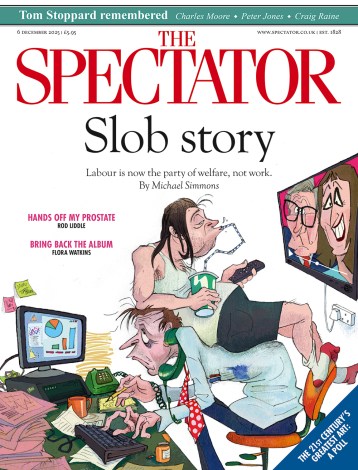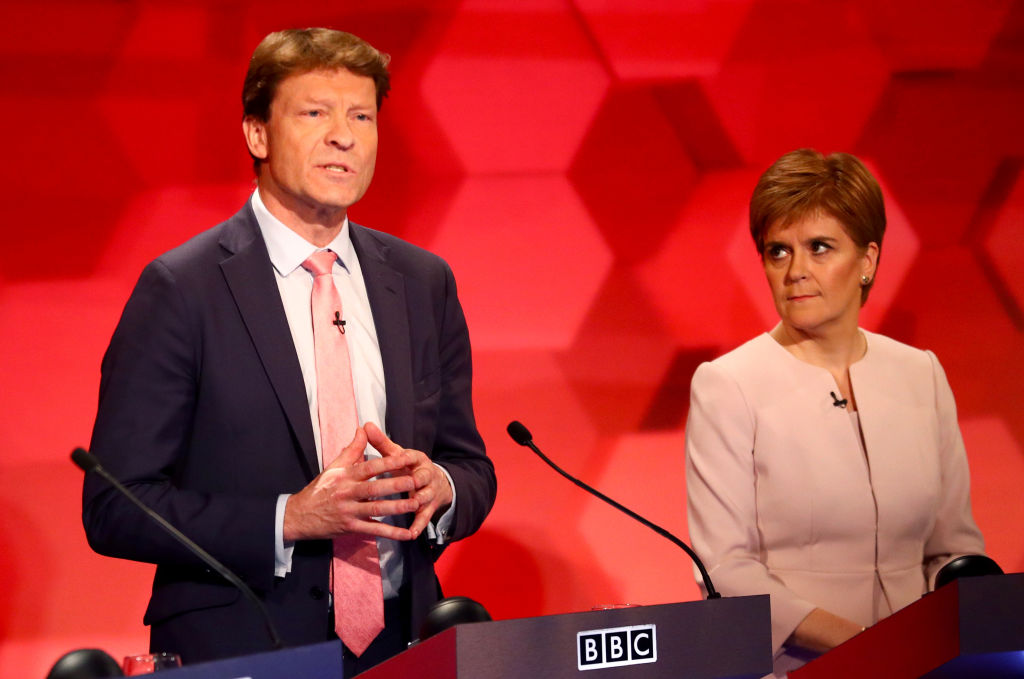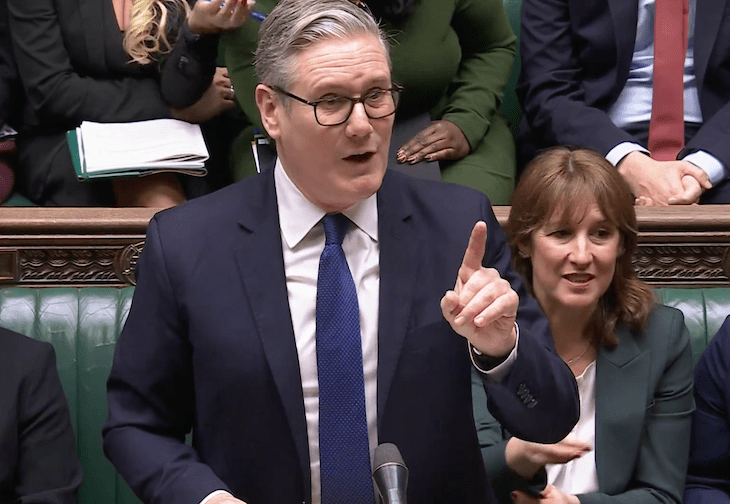Support for Nigel Farage’s party in Scotland is surging. This is despite the fact the Scottish group has no party leader, no parliamentarians and next to no operation on the ground. On his recent trip to Glasgow, Reform UK’s deputy leader Richard Tice struggled to explain any devolved policies and even failed to remember the names of two councillors at an event set up to announce their defections. Meanwhile in Westminster internal battles have exploded in public with a bust-up between MPs Nigel Farage and Rupert Lowe, while Reform voters are starting to turn against their leader.
But to Scottish voters, all this doesn’t appear to matter. Today, a new opinion poll by Survation, commissioned by Quantum Communications where I work, puts Reform on its highest ever Scottish vote share. The party now stands at 17 per cent when Scots are asked about their constituency preference, and 16 per cent on the top-up regional list system used in Holyrood elections. This is a truly remarkable breakthrough. At the turn of this year Reform was around three or four points below this – and 12 months ago it was barely registering one per cent.
How does this translate to seats? According to a calculation by polling expert Mark Diffley, this would lead to 14 Reform MSPs if replicated in the May 2026 election. The party's levels of support may be below those in England, but Reform’s anti-immigration right-wing brand of populism is increasingly attracting voters – once again exposing the myth of Scottish exceptionalism.
Closer analysis of the Survation poll provides some telling insights. Echoing the trend witnessed in the rest of the UK – and across Europe – it is young voters who are helping to drive Reform’s rise. One in five of those aged 16 to 24 say they will vote for Farage’s party on the regional list next year, and support is highest among those earning less than £20,000. In the urban centres of west and central Scotland, where many of the lowest employment rates can be found, Reform is heading towards a quarter of the vote share. In percentage terms the Conservatives are losing most of their 2024 vote to Reform – but they are not alone in haemorrhaging voters. Some 13 per cent of those who backed Labour and Lib Dem in the July general election say they plan to choose Reform next year, as do 5 per cent of SNP voters.
The nationalists won't be dismayed by the latest polling though. While the party is well down from its 2021 levels, adding a cohort of Reform MSPs into the Holyrood mix – and splitting Scotland's unionist vote – could hand the SNP another five years in power on top of the 19 it'll have under its belt by next year. With a smattering of Green MSPs, and perhaps even an elected Alba representative, there could be a pro-independence majority in the chamber once again.
Will that ring alarm bells for Reform voters keen to preserve the union? Admittedly the Farage-founded party doesn't fit particularly comfortably on either side of the constitutional divide that has been the hallmark of Scottish politics for over a decade. The Scottish deputy chair of Reform at last year’s general election was an independence supporter, and a former SNP councillor in Aberdeenshire is among those to have defected to the Farage camp this year. But that doesn't affect the party's pro-UK stance, its Scottish figures claim. Speaking to The Spectator at the start of the year, Reform Scotland's organiser Martyn Greene insisted that: ‘Independence has been put to bed for a generation. There’s absolutely no need to even look at it.’
One in five of those aged 16 to 24 say they will vote for Farage’s party on the regional list next year, and support is highest among those earning less than £20,000.
For the Scottish Conservatives, the strategy next year is clear – use every resource available to argue that a vote for Reform is the route to another SNP government. For Scottish Labour, which has tumbled in the polls in the aftermath of the general election, things are more challenging. But the party is not panicking yet. It feels comforted by council by-election results which have been consistently solid. In East Dunbartonshire in February, Labour’s first preference vote share rose slightly from 2022 while the SNP collapsed by 16 points. It was a similar story in Kilmarnock and West Lothian, even if the SNP managed to cling on to the town hall seats. And while the latest national poll might have Labour down at 23 per cent in the constituency share, in Glasgow – a 'Yes' city – Anas Sarwar's lot enjoy an eight-point lead over the SNP.
Come the 2026 contest, Scottish Labour hopes that Sarwar’s energy and enthusiasm will be the party’s biggest asset, while the behind-the-scenes work on a policy vision for much-needed public sector reform is well underway. In fact strategists from both Labour and Conservative camps are convinced that the Reform vote can be squeezed before people cast their ballot. A lot can change in the short campaign, when the larger parties can spend more, shout louder and deploy their professional teams of organisers on the ground. But whatever party ends up running Holyrood next May, they will surely have to figure out how to grapple with the presence of Scotland’s first Reform parliamentarians.







Comments